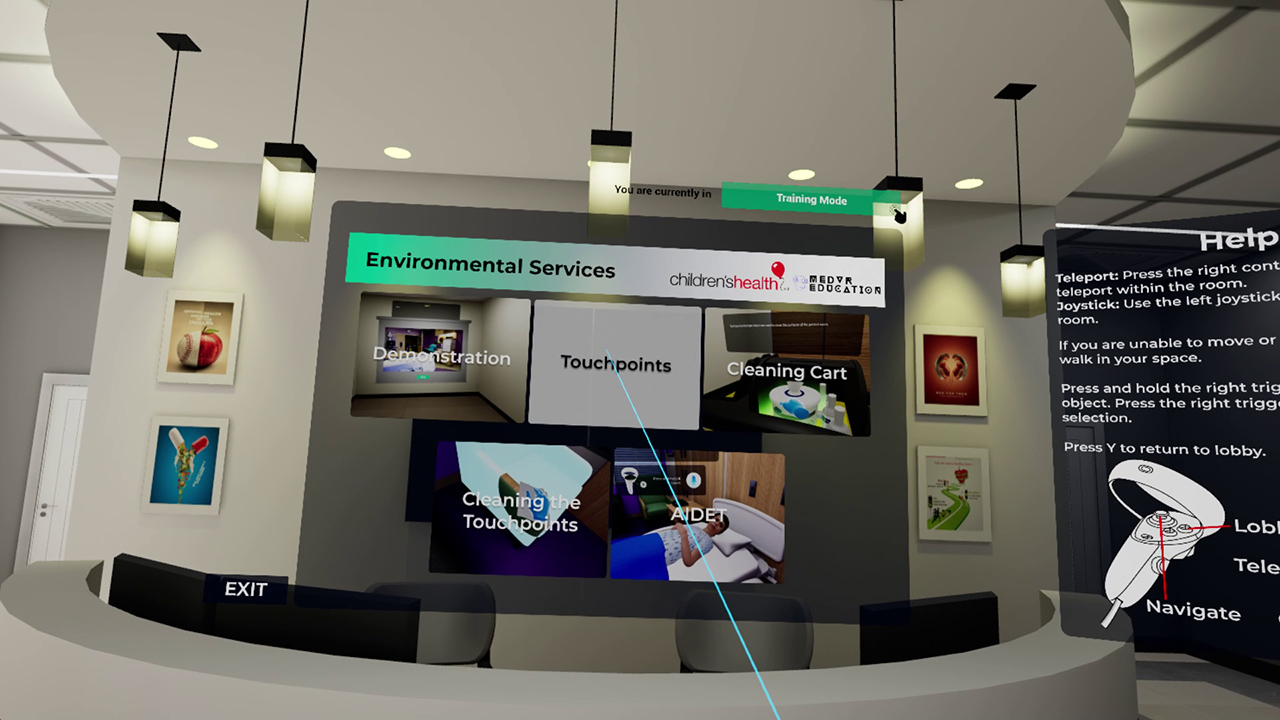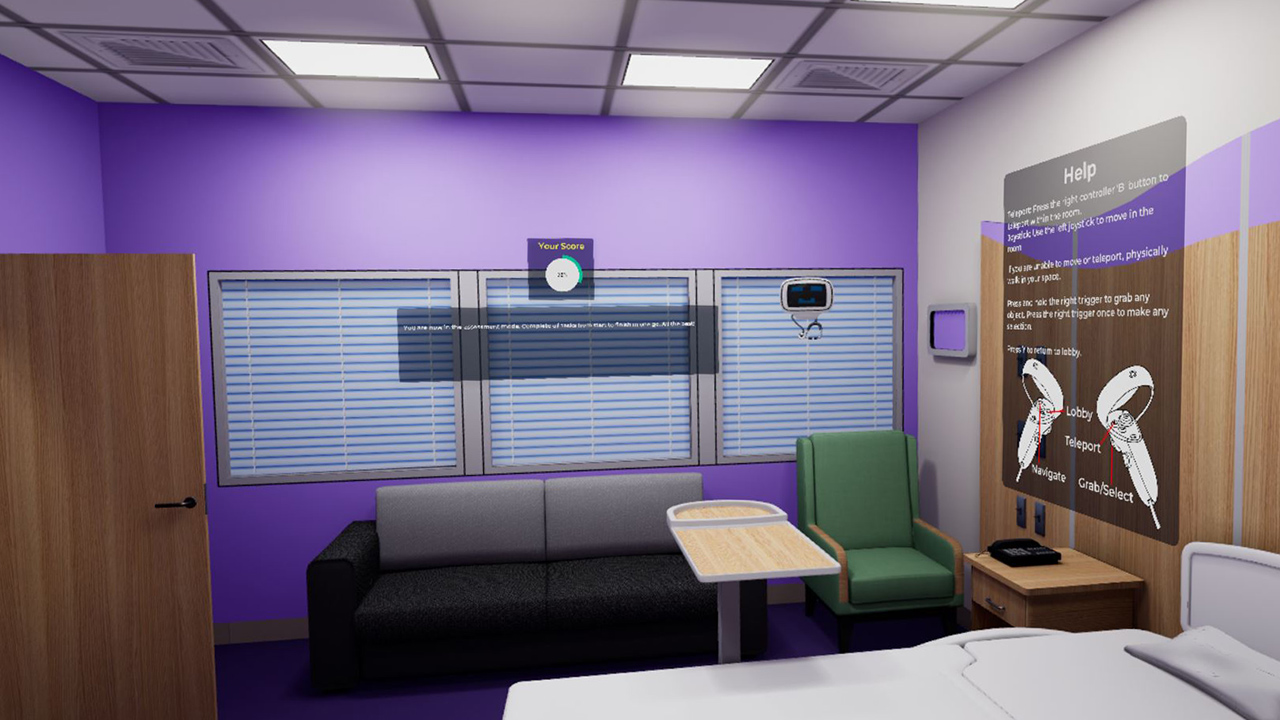Patient Room Cleaning
Developed in alignment with AHE (Association for the Health Care Environment) guidelines.
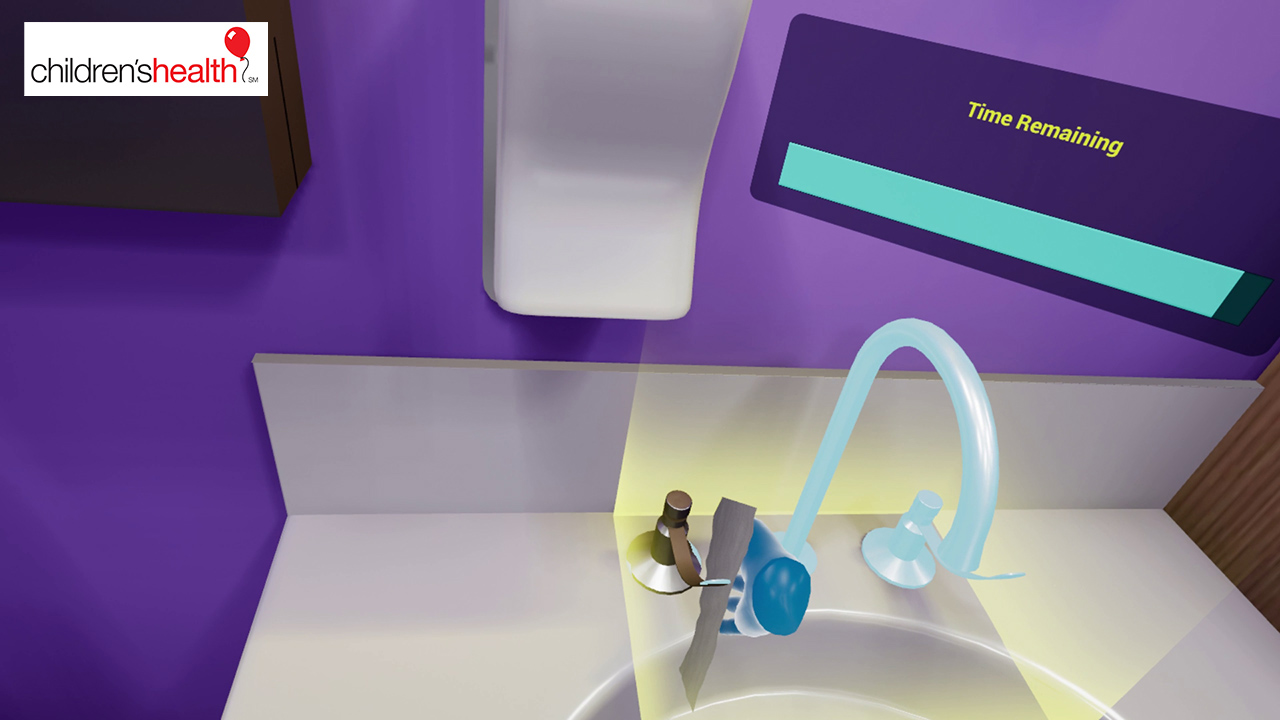
Maintaining a hygienic and safe environment is extremely important, especially inside a healthcare facility. As part of the Patient Room Cleaning VR course, learners are introduced to a patient’s room and demonstrated the cleaning methods followed for the said environment. The various high-risk touchpoints are identified along with the cleaning-cart material. A conversation with a patient familiarizes learners with the AIDET procedure where the learners practice tasks like seeking permission for the procedure, explaining the tasks to be performed, performing the cleaning steps and thanking the patient or caregiver for their cooperation.
Each module in the lesson is set up in a photorealistic environment and is enriched with physics-based interactions. Adequate affordances are provided to assist in smooth execution of tasks. While the training session hand-holds the learner throughout the procedures, the assessment mode allows learners to test their own knowledge and memory.
Core Skills Training
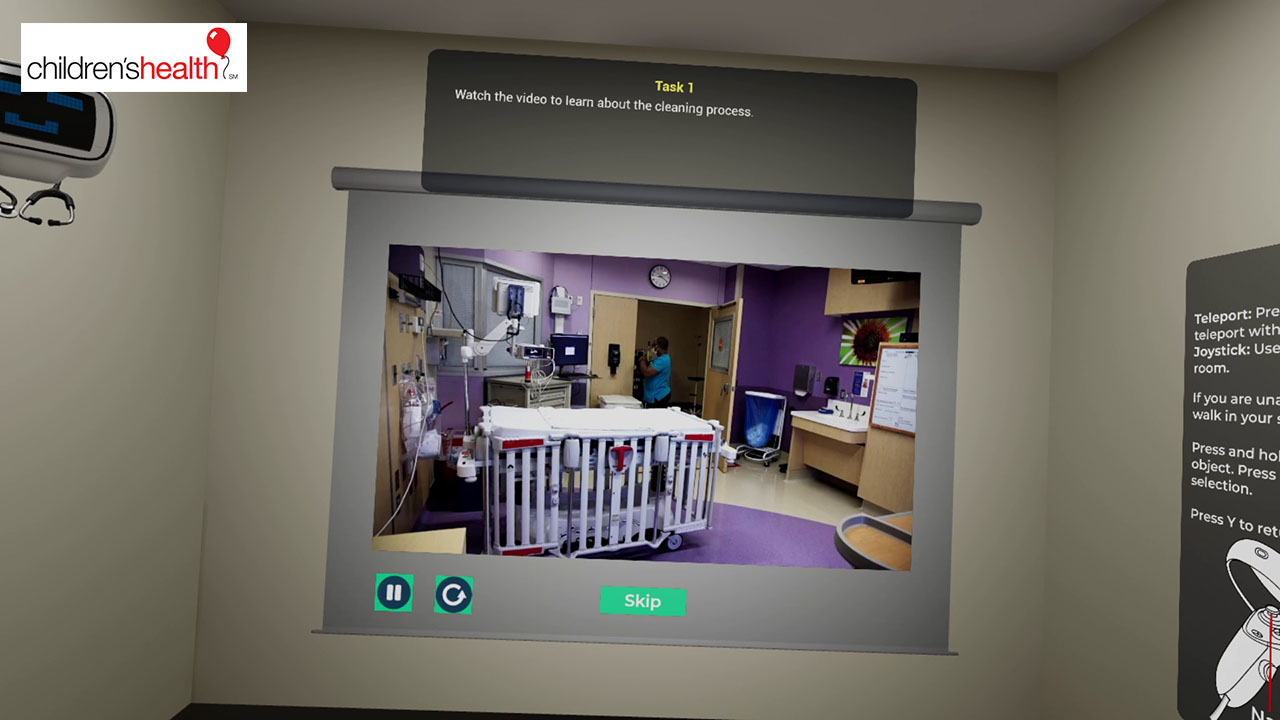
Before the learners start practicing the cleaning process, it is important for them to know the process, understand the little details associated with the steps and keenly observe the procedure. In this introductory module, learners are taken on a virtual tour of a patient’s room and familiarized with a close-to-reality environment, similar to one they may encounter in a real-life scenario. A thorough knowledge of the environment and the procedure will help learners prepare for the upcoming hands-on training sessions.

A well-defined sequence of activities ensures that work is conducted in a disciplined and routine manner guaranteeing every step is performed, in this case, every item and touchpoint is cleaned. In the module, touchpoints are highlighted for learners’ reference. Learners are required to follow a sequence of steps, moving from one point to another, eventually covering the entire work space. Photorealistic scenarios, adequate affordance and physics-based interactions provide realistic experiences.

The cleaning cart houses multiple items, all used for varying purposes. How does a learner know what to use, when, and how? This module introduces learners to the cleaning cart and the items it carries. In this photo-realistic virtual scenario of a healthcare facility, learners are presented with individual cleaning items and each item is explained in detail. Gaining a crisp and clear familiarity with the cleaning material prepares the learners for upcoming real-world tasks.
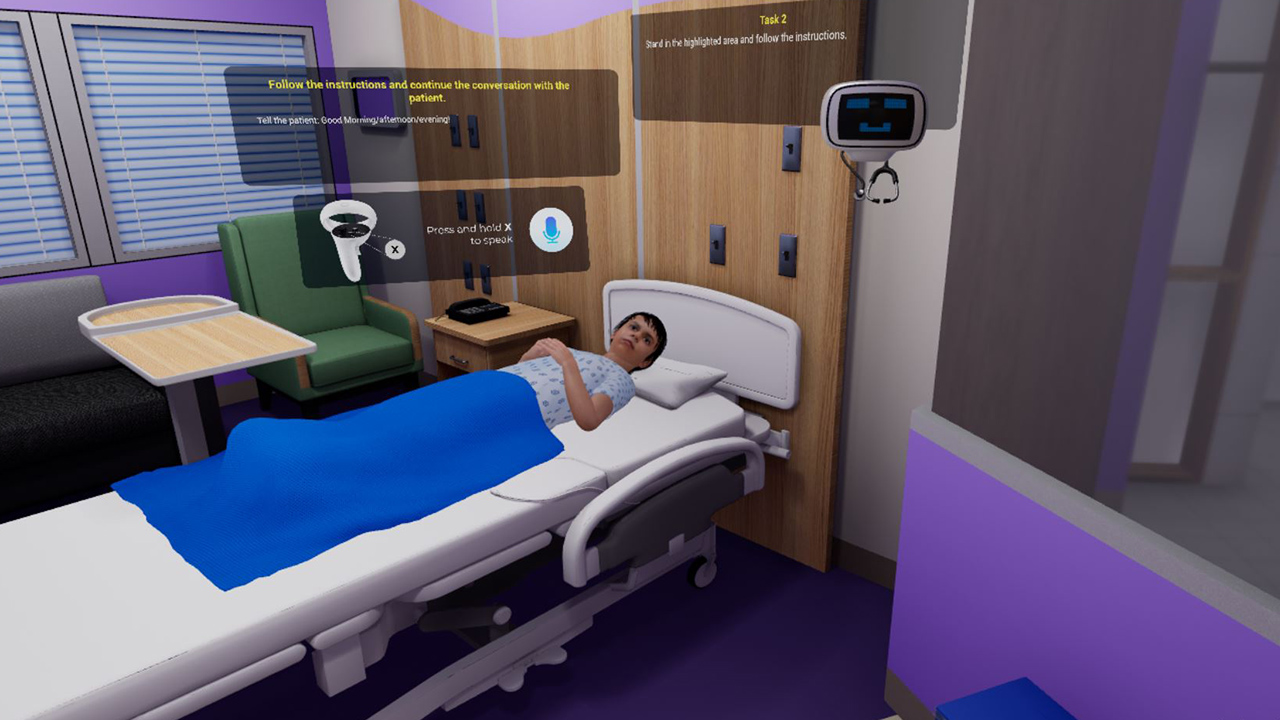
Performing a cleaning task in a patient’s room calls for politeness. As common courtesy and respecting the presence of the patient and caregivers in the room, the EVS professional is expected to follow the AIDET procedure. This involves the following tasks - Acknowledge; Introduce; Duration; Explain; Thank. As part of this module, learners will conduct a monologue with the patient and family to the effect of explaining the purpose of the visit, the nature of job to be done, the approximate time it would take and finally thank the patient and family for their cooperation.

It is now time to practice all the lessons learnt. By this stage in the course the learners are well familiar with the environment, the cleaning agents used, the procedure to be followed and the manner in which to communicate with the patient and family members. In this module, learners will perform the cleaning task of a patient’s room, starting from one defined location and navigating throughout the room in a pre-defined sequence. All necessary affordances are made available and the sequence well-defined. Learners are required to follow every instruction and perform the tasks presented to them.
Training
With prompts, guidance and affordances learners are hand-held through the process to practice the procedure in a virtual environment with a virtual patient.

Photorealistic Virtual Environment

Physics-based Interactions

Learn by Doing

Visual Affordances
Assessment
Test skills to perform the procedures from start to finish without prompts. An incorrect step will take the learner back to the start to start afresh.
Live Scoring

Instant Feedback

Unlimited Practice Sessions


